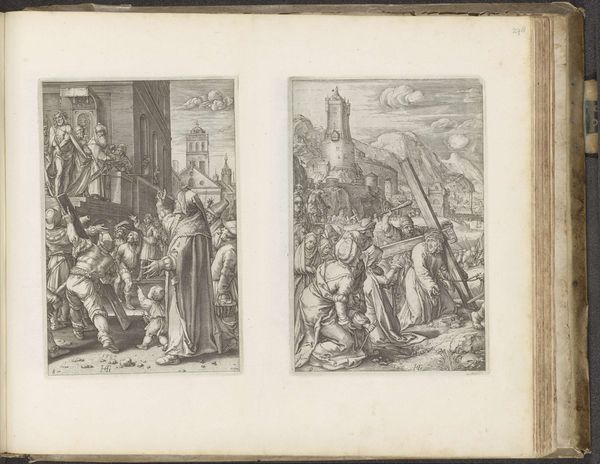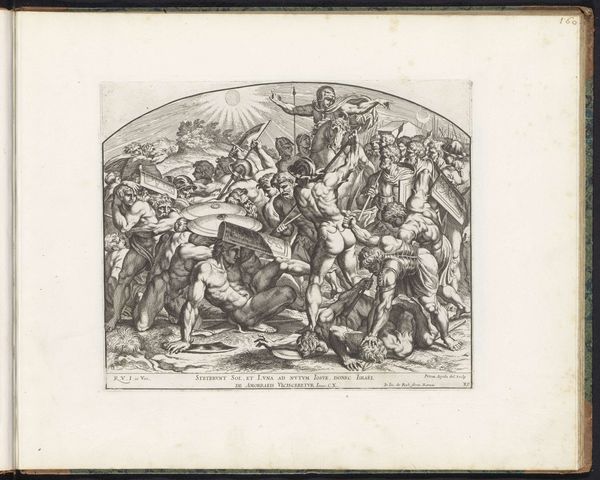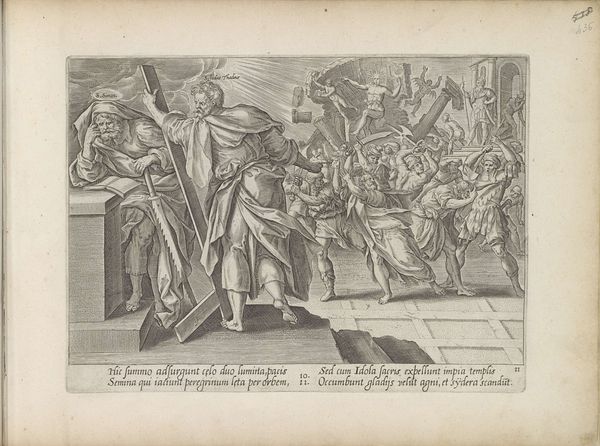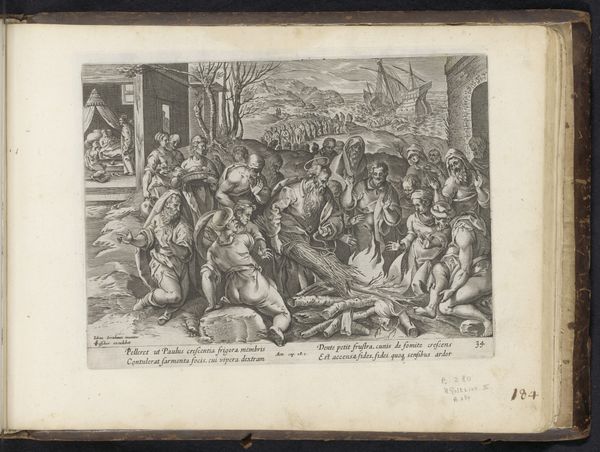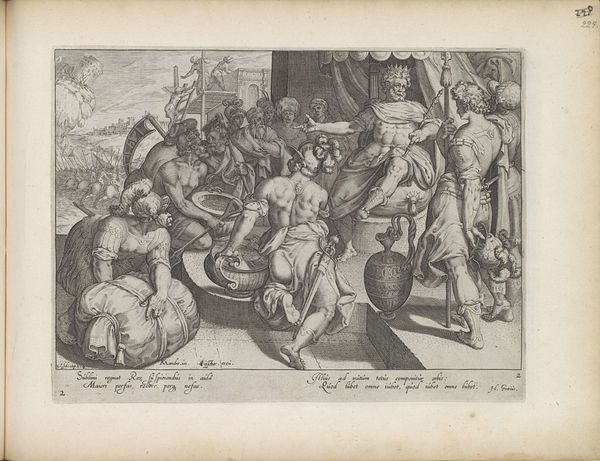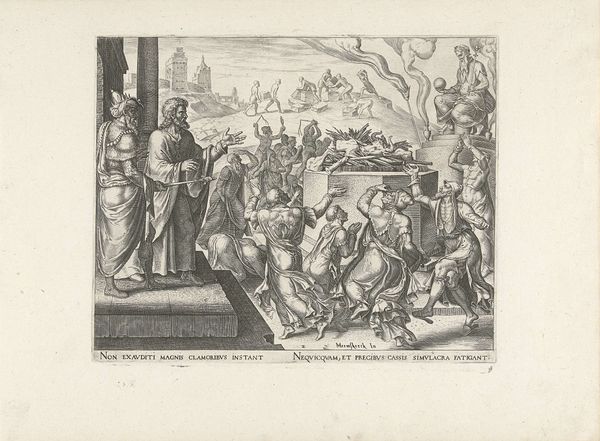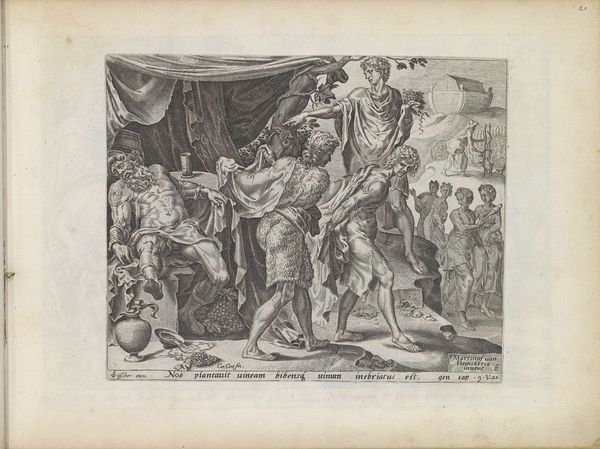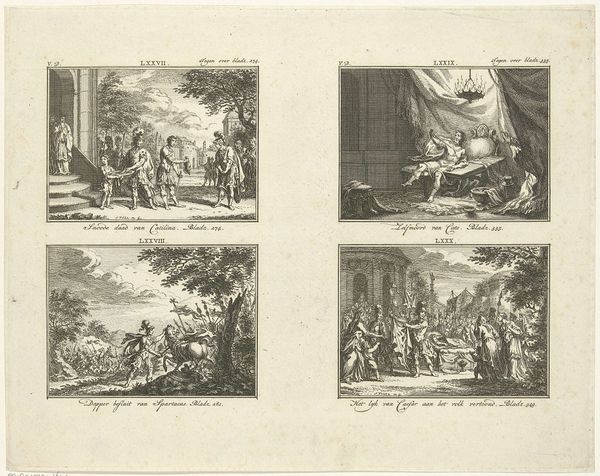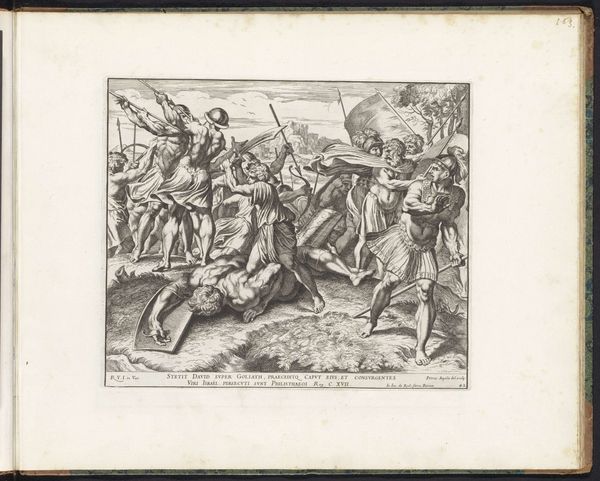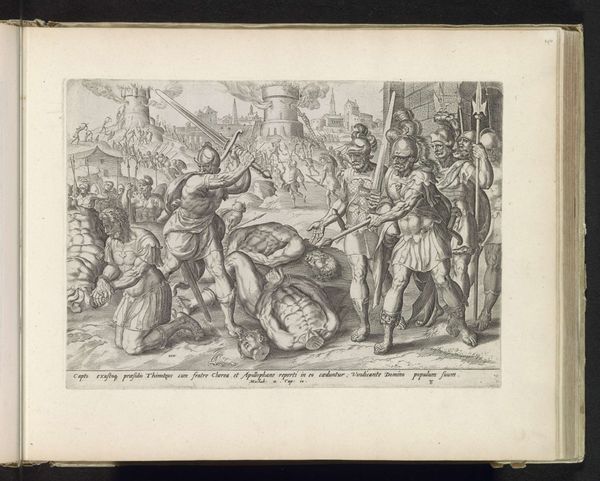
print, etching
#
narrative-art
# print
#
etching
#
figuration
#
11_renaissance
#
history-painting
Dimensions: height 205 mm, width 126 mm
Copyright: Rijks Museum: Open Domain
Curator: Here we have "Christus wordt gekruisigd," or "Christ being Crucified," an etching made sometime between 1585 and 1643 by Pieter de Jode I. It depicts, in two panels, Christ's journey to Calvary and then his crucifixion. Editor: It's strikingly stark, even for the subject matter. The use of etching lends a particular harshness to the figures, their expressions almost grotesque. There's very little softening, very little…redemption, even in the artistry itself. Curator: The images resonate with well-established iconography of Christ’s Passion: The suffering Christ carrying the cross evokes profound themes of sacrifice and human suffering, resonating with both religious and broader emotional experiences. Note also how the city looming in the background takes on symbolic significance, hinting at larger systems of power and authority at play. Editor: That feels like a sanitized reading to me. It's easy to overlook how violence, particularly state-sanctioned violence, is almost casual here. Look at the faces of the torturers; there's no remorse, only grim efficiency. To what extent is de Jode, through this relatively reproducible medium, indicting the normalization of brutality within society itself? What’s absent in traditional religious images –the raw physicality and implications of violence –become the focus here. Curator: Certainly, this challenges the traditional image, yet consider also the purpose of prints such as these; widely distributed, they made complex visual allegories available to a broad public, reinforcing shared religious beliefs in a turbulent era of reformation and counter-reformation. Editor: Yes, they may well have been used for devotion, but art can't be extracted from its context of oppression. We should critically analyze not just the symbols, but the very structures the symbolism sustains. Curator: I appreciate the impulse to draw a direct connection between past representations and contemporary sociopolitical issues, though I still maintain that approaching art history requires also understanding how symbolic meaning functions within specific historical and cultural contexts. Editor: Indeed, but understanding involves constantly questioning, constantly re-evaluating who gets centered, and at what cost. These old works challenge us to confront uncomfortable truths and think critically about historical power structures that continue to echo into the present.
Comments
No comments
Be the first to comment and join the conversation on the ultimate creative platform.
